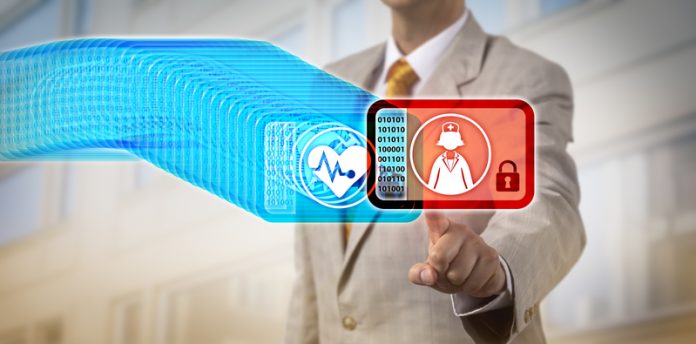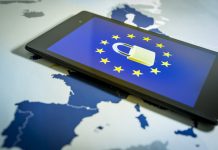Paul De Raeve, Secretary General of the European Federation of Nurses Associations (EFN) sheds lights on how blockchain interoperability is enabling sharing data across the care continuum
The interoperability of electronic health records (EHR) in Europe is key, especially now the European Commission plans to publish a recommendation on the technical specifications for an HER exchange format. Although the EHR exchange format is part of a bigger plan of the digital transformation of the health and social care in the Digital Single Market, the EU financing of two H2020 projects, ‘Smart4Health’ and ‘InteropEHRate’ can lead to large-scale interoperable designs, especially at a time when a variety of government agencies are moving their infrastructure on to new technologies offering optimum security and data privacy. The policy outcome, adopting an EHR exchange format at EU level, could end the endless and costly interoperability discussion we have had for the last two decades. Despite some advancements towards more seamless interoperability in the healthcare sector, frontline deployment of continuity of care, based on data sharing in clinical care pathways, could benefit more from new IT developments.
Although called ‘disruptive’, we recognise these new systems compete for market shares struggling to make a business case for sharing the data they’ve gathered, sorted, collected, aggregated and secured. Therefore, it becomes key that the IT industry, the EHR vendors become connected to the frontline practitioner so products become co-designed, fit-for-purpose, reduce the endless hours nurses spend on data entry, leading to a general malaise towards software solutions that were supposed to help, but it really just means more work for the frontline. So, it becomes high time to get interoperability right!
Co-designing interoperable solutions
A favourable ecosystem of trust and political support to use blockchain as a way to tackle interoperability is not the main challenge, but what we miss are the practical use cases showing blockchain works better for the frontline due to solving the interoperability challenges we currently have in the healthcare ecosystem.
It is argued that blockchain makes it possible to exchange data from different sources, in different formats, among the end-users, at their fingertips to plan and provide frontline healthcare. Within this context, nurses have an opportunity to co-design an EU interoperable EHR as end-users, respecting the existing national EHR developments. Therefore, EFN partnership in the H2020 granted EU projects focusses on co-designing a fit-for-purpose interoperable EHR, aiming to prototype:
- A citizen-centred implementation of a platform that can be integrated with a federated platform structure, easy-to-use and secure, constantly accessible and portable within any other Member States of the EU and;
- A data-driven platform to help the scientific community to benefit from the user-generated data (health, care, and health-related) going beyond the currently established interoperability level.
Nurses are in the unique and privileged position in co-designing interoperable solutions as they have direct access to the daily care needs of people and have an in-depth knowledge of the patients’ experiences and contextual environments in which the continuity of care takes place. As nurses are central in empowering citizens/patients to have access to health and social services, they play a significant role in addressing trust and ensure the appropriate allocation of nursing data in the EHR to facilitate continuity of care and as such, to ensure better health outcomes.
Defining the end-user requirements and scenarios to be supported by the new EHR interoperability, co-designing a set of services fulfilling the end-user requirements for realising the incremental cross-border interoperability, could become key for successful blockchain case studies at EU level.
Moving beyond interoperability
Understanding the potential of blockchain in the health and social care sector and how to realistically implement it in cross ‘border’ care (could also mean across the street!) is not always clear to the end-user. Often, when addressing audiences, and they pick up the word blockchain as a possible solution, participants often react by asking, “What do you mean by blockchain?” and some react as, “It is just a hype, just forget it!”
However, when co-designing with nurses, key criteria such as transparency, trust, and smart contracts will come immediately on the design table. One of the most significant ways blockchain can potentially help the health and social care sector is by empowering patients/citizens, therefore, allowing each individual/ provider access to the chain of data relevant to deliver care. As blockchain is based on a smart contract within the peer-to-peer (P2P) network, empowering the patient/citizen in a people-centred healthcare ecosystem, the concept of gatekeeper in the healthcare system disappears.
As the P2P network records transactional data, each maintaining its own copy of the ledger, with all ledgers being kept in a historical and synchronised way, this constitutes the single source of data needed within nursing care pathways (scenarios). For nurses, it is key to have access to real-time health and social data eliminating the need for reconciliation. This native features of blockchain allow patients/citizens and multiple health and social providers to share anything of value across the system in a more transparent, efficient, and secure way.
Conclusion
Interoperability is required to provide person-centred, proactive and well-coordinated care in the EU, even cross-border. A P2P chain, without any gatekeeper, can decrease the continuity of care frustrations and high costs, by simplifying processes, reducing delays for the patient/citizens, and more important, reducing the administrative workload of frontline nurses. Within the Digital Single Market Strategy for Europe, it is key to prioritise the EU EHR for citizen empowerment and person-centred care deployment, taking into account the views of the end-users to make solutions fit-for-purpose. One field where blockchain technology has tremendous potential is health and social care, due to the need for a more people-centric approach, connecting existing national electronic healthcare records (EHRs).

Paul De Raeve
Secretary General
European Federation of Nurses Associations (EFN)
Tel: +32 2 512 74 19











